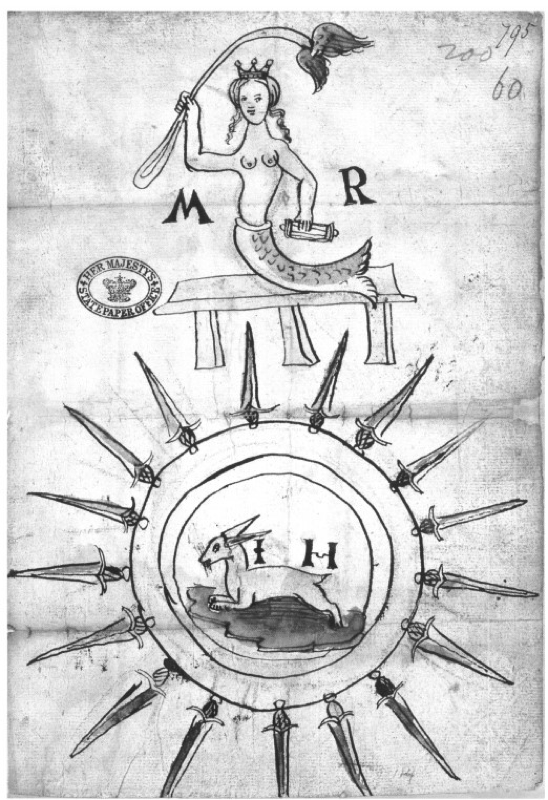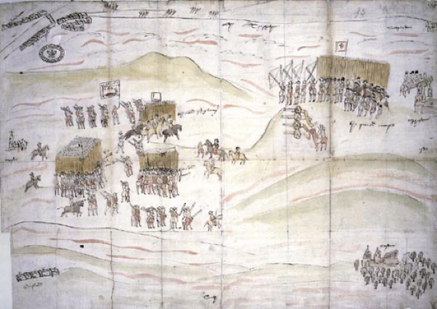Lord Bothwell
and the Battle of Carberry HilL
The chief suspect in Darnley’s assassination was Lord Bothwell. As Lord High Admiral of Scotland he had been at Mary’s side during key moments of her reign. Many now thought that they had become intimate, despite Bothwell being already married, and that Mary was an accomplice in Darnley’s murder. Placards were posted in Edinburgh accusing them of adultery and regicide.
|
Mary continued to keep Bothwell close. In March 1567 her valet de chambre, Servais de Conde, recorded that Mary had given Bothwell some treasured vestments from the royal store, thought to be talismanic spoils from the Scottish victory over the English at the Battle of Banockburn in 1314: In March 1566 I delivered three of the fairest which the Queen gave to the Lord Bothwell Extract from Inventaires de la Royne Decosse There followed one of the most controversial episodes in Mary’s story: a seeming abduction and rape by Bothwell which led to Mary agreeing to marry him. An annulment of his marriage was speedily arranged and he and Mary were wed with scant pomp and little joy. It [the marriage] is too unhappy and begins to be repented of. Yesterday…she called aloud for knife to kill herself…I believe that if God does not support her, she will fall entirely into despair. Letter from the French ambassador in Scotland to Catherine de’ Medici, May 1567 Sketch of one of a placard posted on St Giles Church in Edinburgh depicting Mary as a mermaid (a symbol of seduction and lust) and Bothwell as a hare surrounded by the threat of violence.
|


